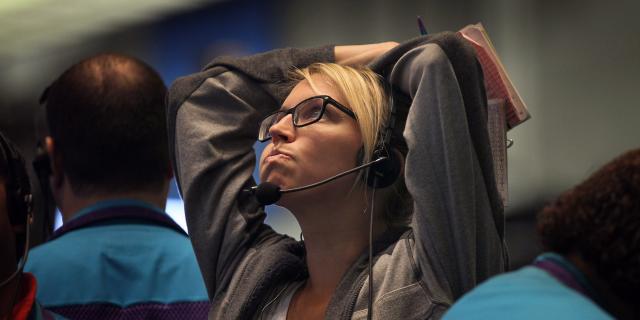
-
US stock investors are headed for disappointment, a Federal Reserve researcher has warned.
-
Corporate-tax and interest-rate cuts boosted stock returns for years, Michael Smolyansky said.
-
The Fed economist sees a bleak future for stocks as earnings growth slows and tailwinds fade.
Investors in US stocks have enjoyed a brisk tailwind for decades, but their luck is about to run out, a Federal Reserve researcher has warned.
Michael Smolyansky, a principal economist at the Fed, recently published a working paper titled: “End of an era: The coming long-run slowdown in corporate profit growth and stock returns.”
His key finding is the S&P 500’s real return of 5.5% (excluding dividends) between 1989 and 2019 was mostly fueled by declines in interest rates and corporate tax rates, which are unlikely to be repeated in the years ahead.
Stock prices typically rise because corporate profits grow or price-to-earnings (P/E) multiples expand. Smolyansky found that reductions in corporate tax and interest rates accounted for over 40% of the real growth in corporate profits between 1989 and 2019.
Moreover, lower interest rates translated into lower risk-free rates (the guaranteed return from assets such as US Treasuries), which explained all of the expansion in P/E multiples during the three-decade period.
“Investors therefore got lucky,” Smolyansky wrote. “I contend that this spell of good luck is most likely at an end.”
Interest rates sunk to historic lows even before the COVID-19 pandemic struck in early 2020. There’s little scope to take them any lower, especially given the renewed threat of inflation, Smolyansky said.
Meanwhile, the effective corporate tax rate for S&P 500 non-financial firms dropped from 34% in 1989 to 15% by 2019. Further cuts seem unlikely given the US debt-to-GDP ratio is near a record high, and the Biden administration imposed a minimum tax rate of 15% last year, the researcher said.
Even if corporate tax and interest rates hover around their 2019 lows in the years ahead, corporate profits will only grow at the same rate as earnings before interest and tax (EBIT), Smolyansky said. EBIT growth lagged GDP growth in the US between 1962 and 2019, so it’s unlikely to grow more than 2% a year in the long run, he continued. P/E multiples can’t expand endlessly either, he added.
“This has serious implications for stock returns,” Smolyansky said. “If real earnings growth is not likely to exceed 2% per year over the long run, then the outlook for stocks is bleak.”
“Both stock returns and corporate profit growth are very likely to be substantially lower in the future,” he added. The economist described the decades-long boost to earnings growth from tax cuts and interest-rate cuts as “a trend that has reached its limits.”
Smolyansky cautioned that his grim outlook is likely conservative. If the stock market isn’t already pricing in lower earnings growth, P/E multiples could contract sharply once it does, he said. Moreover, declines in interest and corporate tax rates may have stimulated EBIT growth in recent decades, paving the way for an even greater slowdown than he’s predicted.
“The risks to this forecast, if anything, are to the downside,” he said.
Read the original article on Business Insider
Source: finance.yahoo.com
